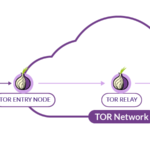The Internet of Things (IoT) refers to the connection of everyday devices to the internet, from smart thermostats to industrial machinery. While IoT devices offer convenience and efficiency, they also pose security risks, as many of them are equipped with weak security controls, making them vulnerable to hacking and other cyber attacks. Here are some best practices for securing IoT devices:
Change Default Passwords
Many IoT devices come with default passwords, such as “admin” or “password,” that are easily guessed by hackers. Change the default passwords to strong and unique passwords, and use multi-factor authentication whenever possible.
Regularly Update Firmware
IoT devices are connected to the internet, and as such, are susceptible to cyber attacks. Regularly updating the firmware can help ensure that the device has the latest security patches and can protect against newly discovered vulnerabilities.
Limit Network Access
Limiting network access to IoT devices can help reduce the risk of cyber attacks. Separate IoT devices from critical systems and information to prevent unauthorized access to sensitive information.
Use Encryption
Encryption can help protect against data interception and unauthorized access. Ensure that the devices’ communication and data storage are encrypted, especially for sensitive data.
Monitor Activity
Monitor activity for unusual or unauthorized behavior. Establish policies and procedures for verifying and authenticating requests for access to IoT devices or systems that contain IoT data.
Conclusion
Securing IoT devices is essential to prevent them from becoming a source of security vulnerabilities. By following these best practices, you can secure your IoT devices and reduce the chances of cyber attacks. Changing default passwords, updating firmware, limiting network access, using encryption, and monitoring activity are all critical steps in securing IoT devices. Stay vigilant and informed about the latest cybersecurity threats and best practices to ensure your IoT devices remain secure.
Author Bio:
LearnPrivacy is a team of technology and cybersecurity experts with decades of experience. We have worked with numerous companies to protect organizations from cyber threats. We are passionate about educating individuals and businesses on digital privacy and security, and regularly post to our blog at https://learnprivacy.org. Our expertise covers areas such as threat intelligence, network security, data encryption, vulnerability management, and incident response. Stay informed on the latest threat trends and best practices by following us on our social media accounts.







